Although rep has already gone out of fashion, it continues to be used not only for sewing clothes, but also for decorating interiors and creating jewelry. Craftswomen often make kanzashi jewelry from rep ribbons, which everyone loves. They came to us from Japan, where they are used as a traditional decorative element on the head and hair along with kimonos. This article will tell you about the properties of a rep ribbon, how to make kanzashi from a rep ribbon, and what a rep knot is in macrame.
What's happened
A grosgrain ribbon is a narrow strip of polyester threads and made of grosgrain fabric with characteristic ribs. The edges of the ribbons are framed by a selvedge, which largely determines its strength, rigidity and ability to retain shape. Like grosgrain fabric, ribbons can be plain or printed. Its width can be between 5 and 50 mm. You can buy it in almost any sewing store or in craft stores.
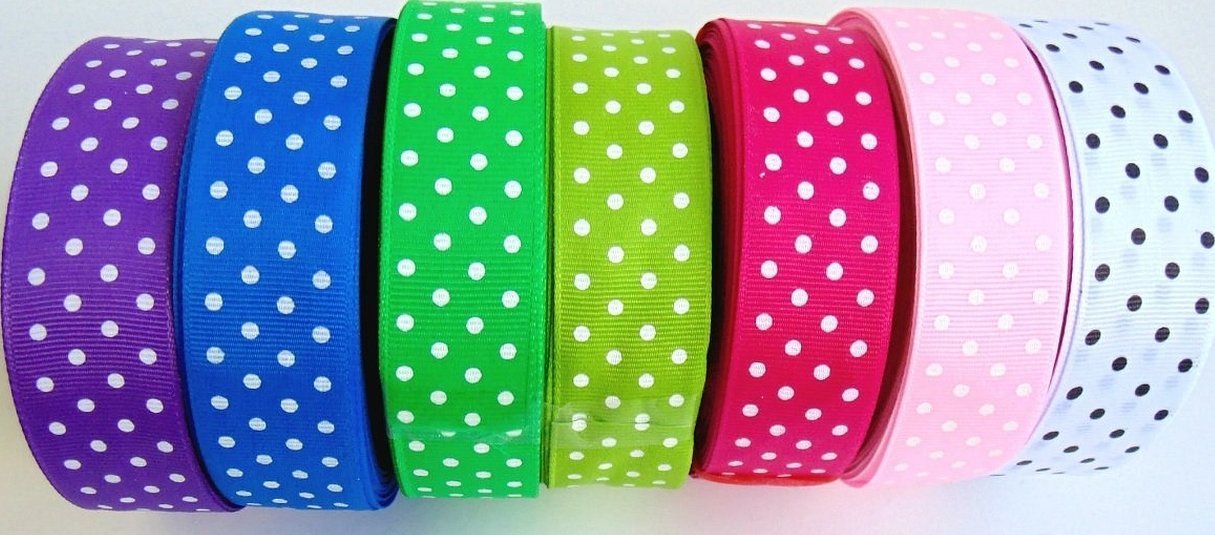
Rep tapes are produced similarly to rep fabric - by interlacing threads, which is a modified method of plain weave. In this case, the warp and weft fibers overlap sequentially, which creates a relief in the form of a rib and an interesting texture on the surface of the material. To make the ribs more relief, thicker wefts are selected and the density of the fibers in the warp is increased.
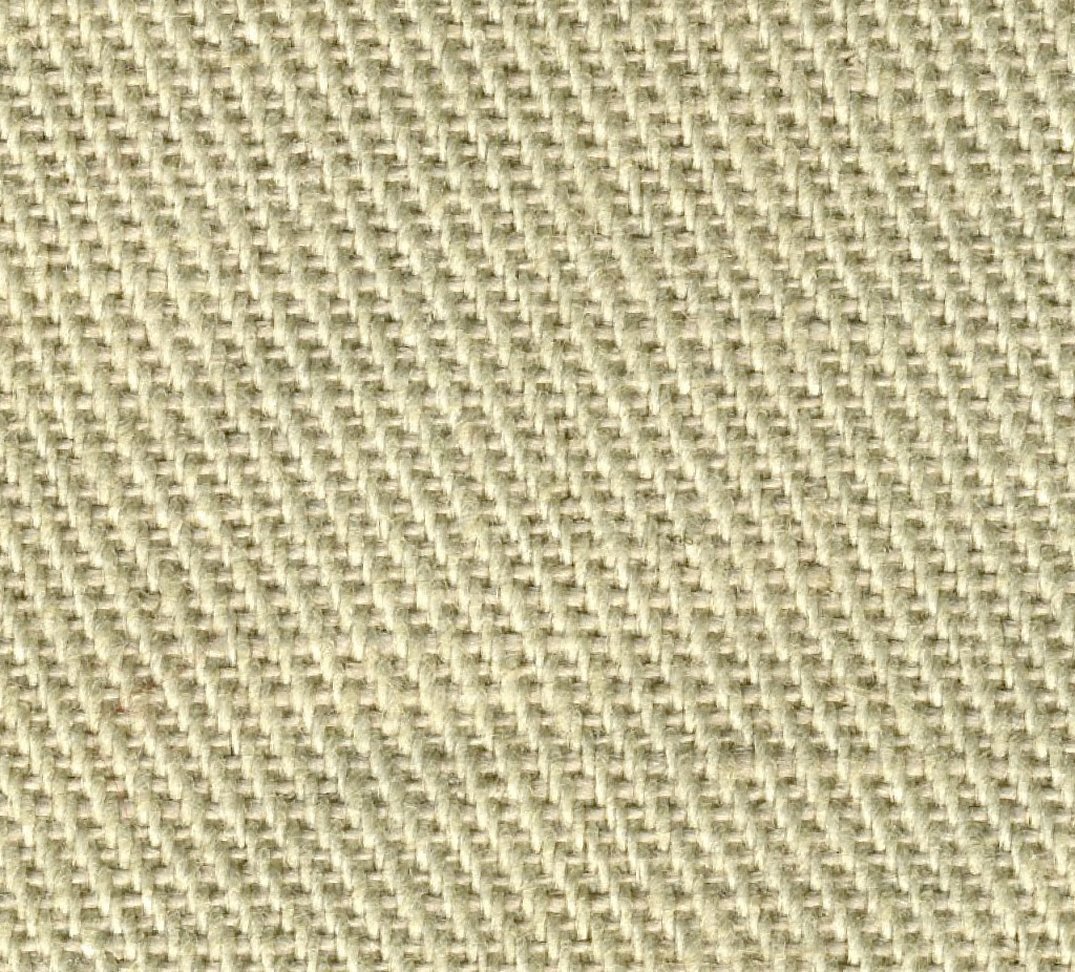
The characteristics and properties of the tape are determined by the method of its weaving and the quality of the material, its type. Due to the porous but rigid structure, rep products allow air to pass through well, but retain their shape.
Important! The longitudinal relief even visually makes the figure of the owner of the rep dress narrower and more beautiful. This is achieved by a certain interweaving of fibers.
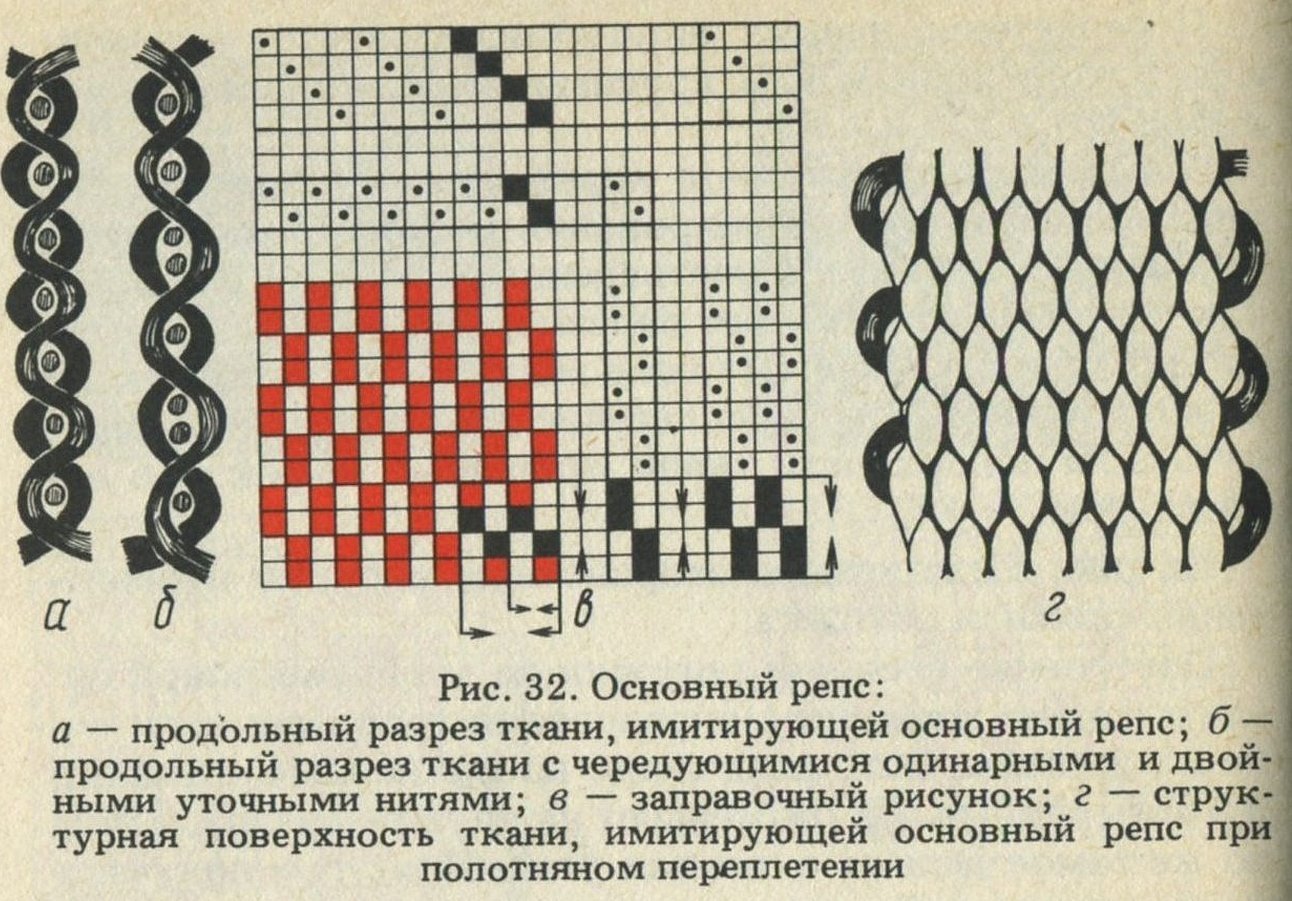
Ribbons, like reps, are characterized by:
- Wear resistance and durability;
- Hygroscopicity;
- Breathability;
- Density and retention of a given shape.
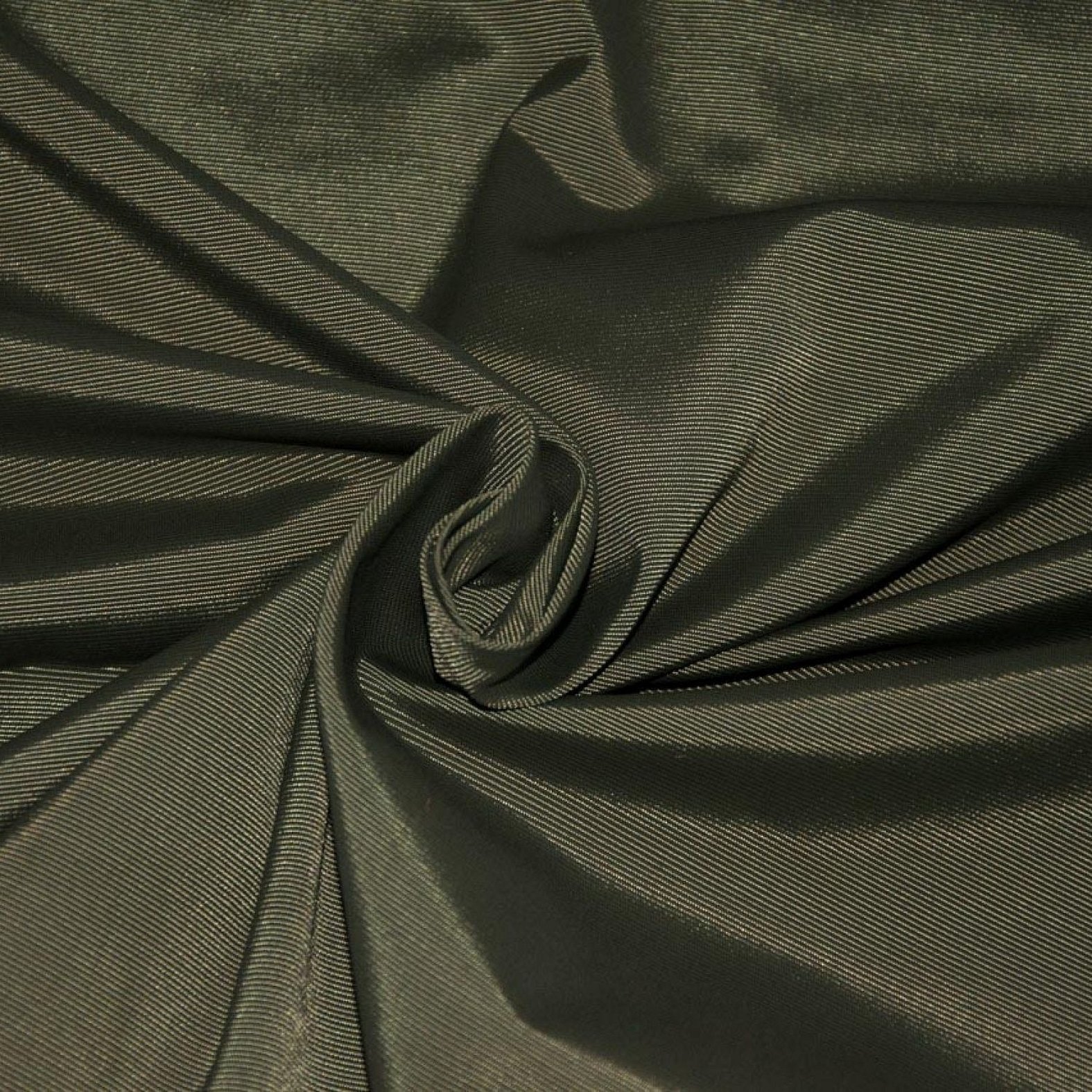
There are also quite a few parameters by which the tape is selected. They determine its type and purpose:
- Width, which can reach from 5 to 50 millimeters. Especially often needlewomen use materials of 25 and 40 millimeters width for sewing;
- The form, which can be not only simple material, but also perforated, reminiscent of lace patterns and designs;
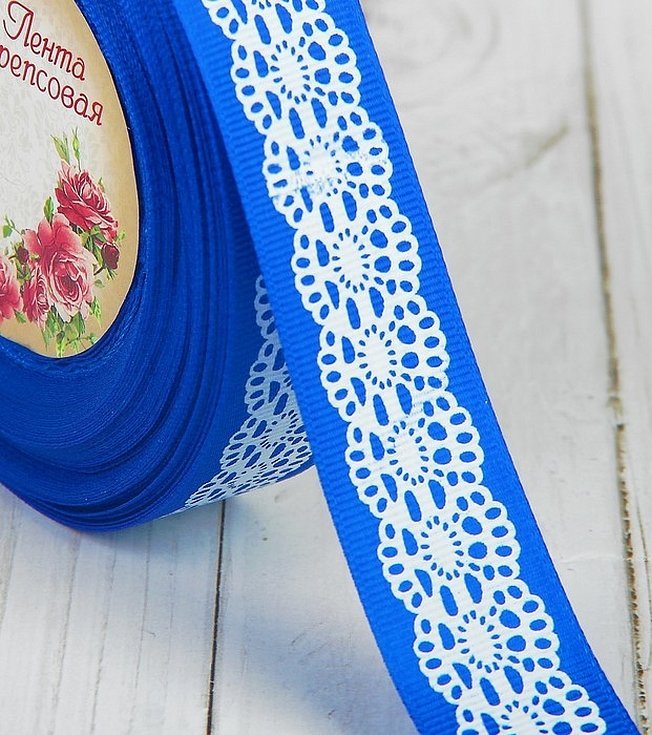
- A color that can be solid, gradient, or printed. The most common solid colors are blue, black, or beige;
- The stiffness parameter depends on the strength of the thread interlacing. In general, stiffness is divided into three types: soft, medium and hard. The softest ribbons are used to decorate books or albums, and the harder ones are used to decorate clothes and create kanzashi.
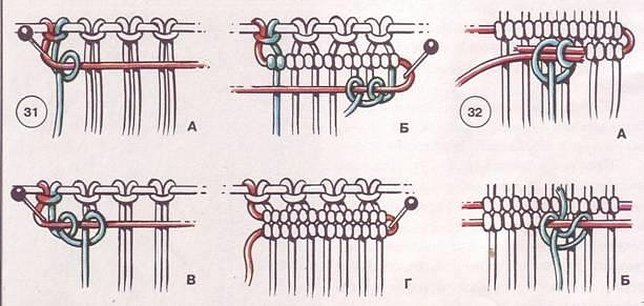
Kanzashi from grosgrain ribbon
Kanzashi or kanzashi is a traditional Japanese hair ornament that is often worn with, complementing, a kimono. Kanzashi appeared as ornaments made of combs and hairpins in the 1700s. Historically, they were made of boxwood, sakura, magnolia wood and painted or varnished. There are ornaments made of precious metals such as gold or silver. Today, brass or tortoise shell, as well as plastic, are increasingly used in Japan to make the base of the ornament. Decorative elements are made of coral or quartz, jade.
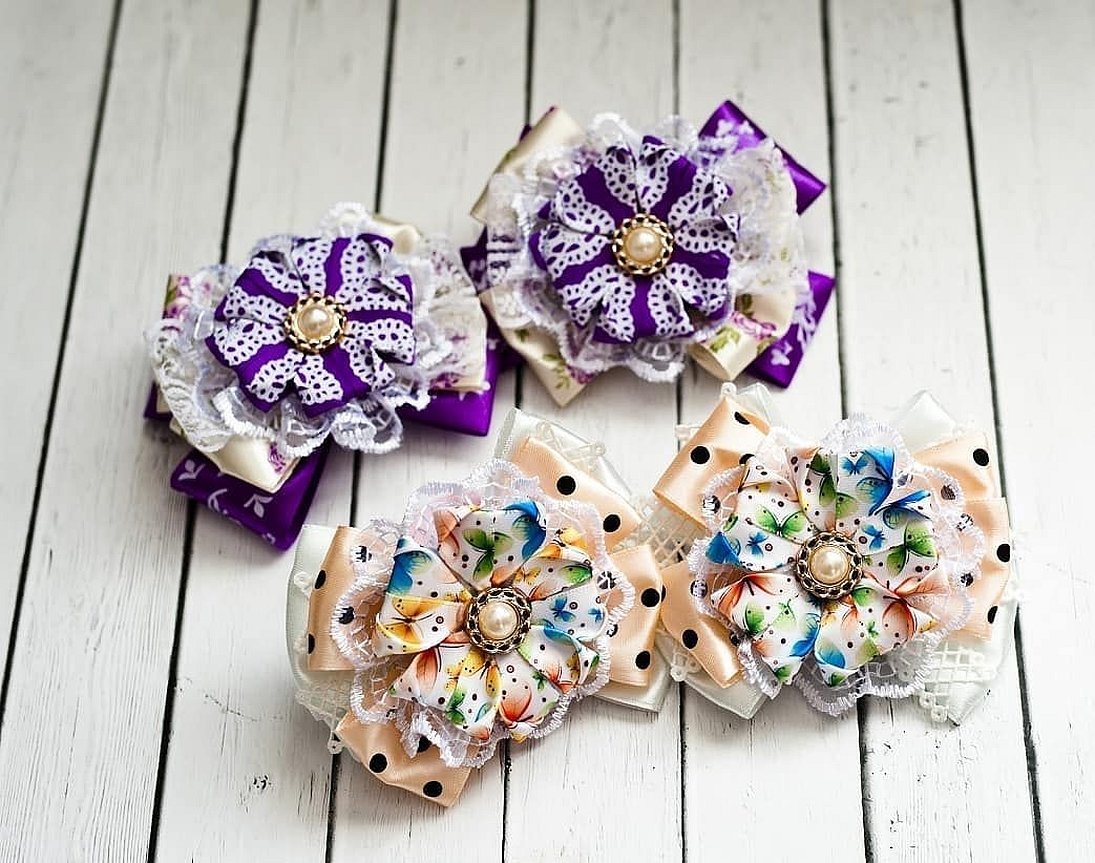
Russian craftswomen have adopted some aspects of jewelry creation from Japanese women, but our kanzashi are very different from traditional ones. And it is not only because wearing jewelry in Japan is strictly formalized (all products correspond to the social status of a person), but also because of the use of completely different materials and styles for production.
Important! Kanzashi made of rep ribbons, beads and rhinestones are considered classic for Russia. Despite the discrepancy with the original, they look beautiful and can decorate any hairstyle, giving it a unique look.
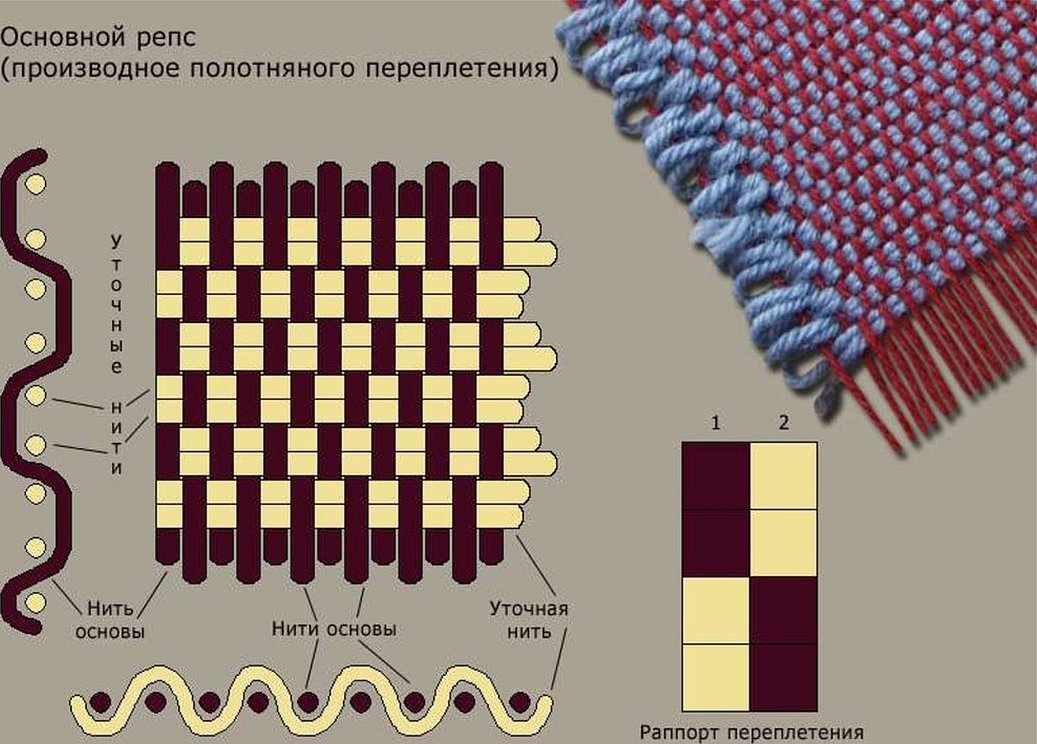
To make classic kanzashi from grosgrain ribbon, you will need:
- Two types of grosgrain ribbon, 25 and 40 millimeters wide, peach or red and green colors respectively;
- Decorative branches with stamens or beads;
- Two metal clamps;
- Two felt circles 35 mm;
- Needle, thread, tweezers, pen, candle or soldering iron, glue.
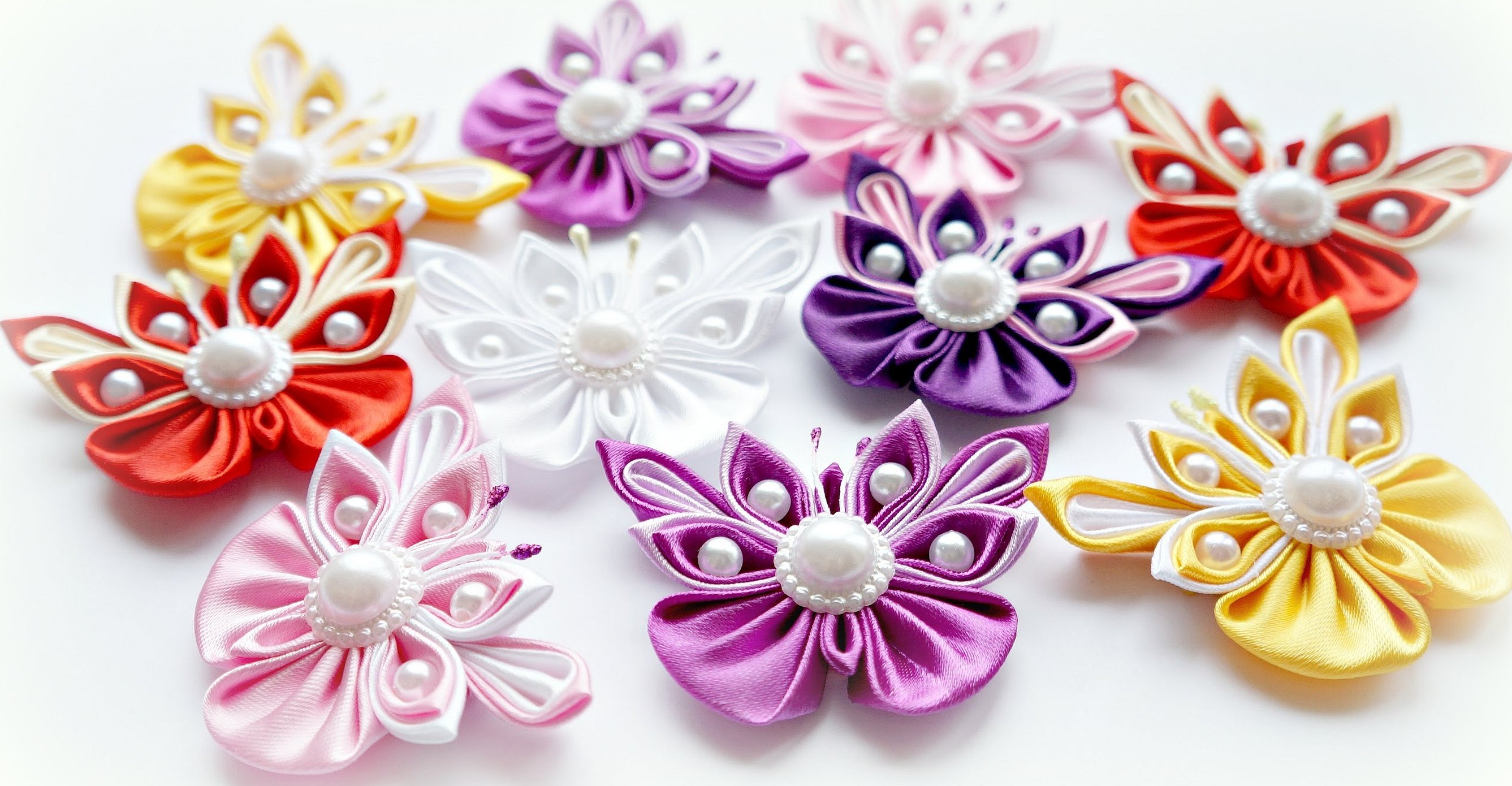
The manufacturing process itself involves the following step-by-step actions:
- Mark the first ribbon into 8-10 centimeter pieces for the number of petals in each decoration. Cut the larger ribbon shorter (5 centimeters) for the four leaves of each flower;
- Form the petals and leaves by folding the pieces in half and folding the bottom left corner and joining it to the right. Do the same with the other end, and then join the bottom corner to the top right corner to create folds. The last fold is formed where the piece was folded in half: it needs to be moved half a centimeter from the top corner;
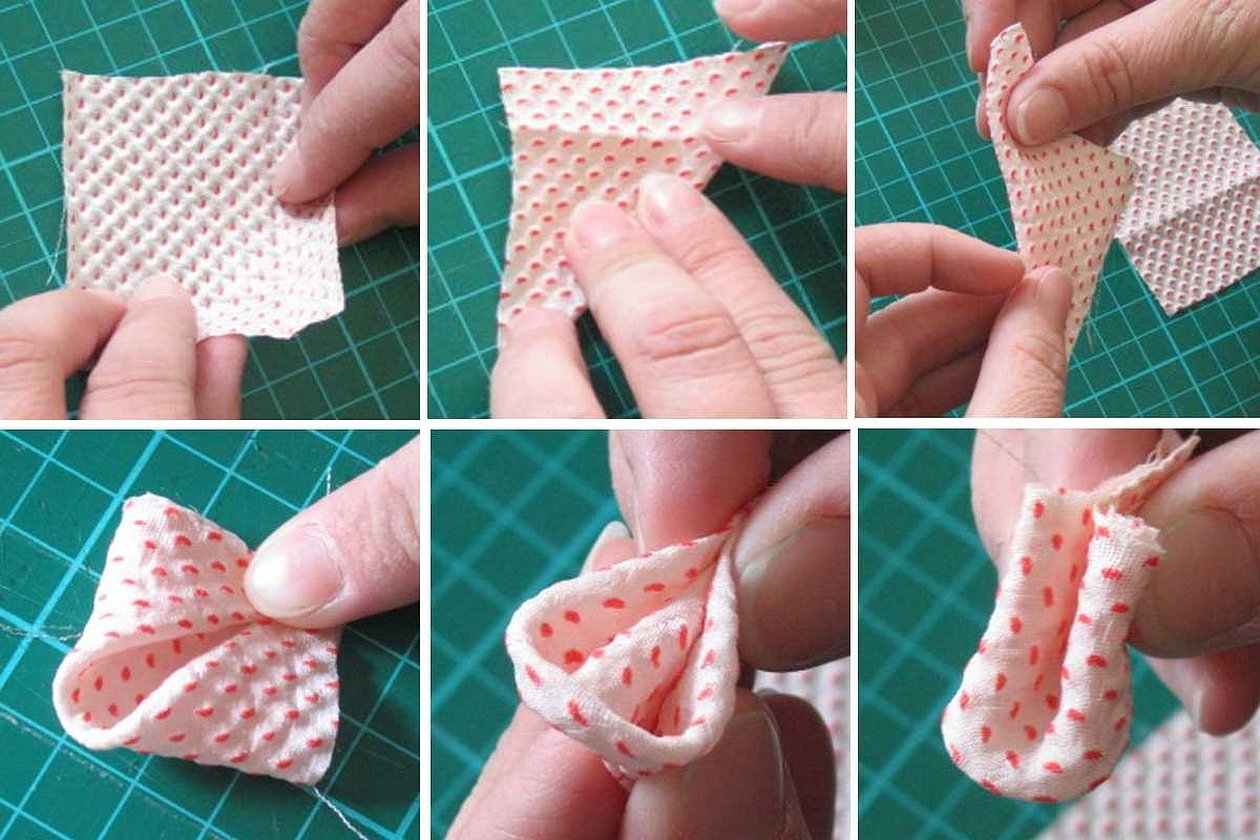
- Cut off unnecessary pieces of fabric and burn the edges with fire, glue the edges together with glue;
- Pull out the petal and clamp its tip with tweezers for a couple of millimeters. Solder this clamp over the candle;
- Gather the petals for one kanzashi on a thread and pull them loosely into one flower. In the middle, glue decorative stamens or sew beads. You can fix all the petals together by moistening them with glue on the back side;
- Similarly, make simplified petals and also glue them on the back, having first “planted” them on glue with metal clamps.
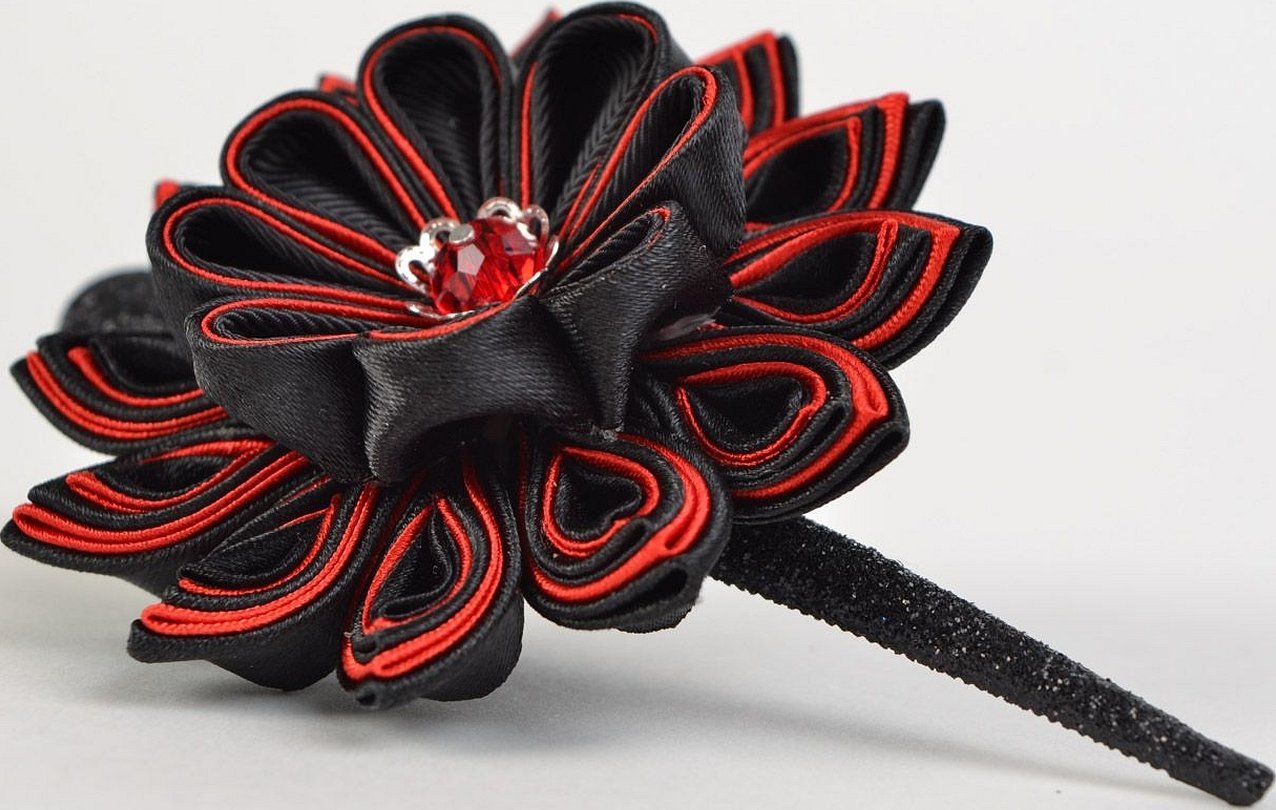
DIY rubber bands from rep ribbons
Craftswomen also often make rubber bands from rep for children and adults. Their production is not much different from traditional kanzashi, as is their use: they decorate and collect hair. The classic "recipe" for creating rubber bands involves using the same materials as when making kanzashi.
Each hair band or hair clip decoration consists of proportional petals or bows connected on a felt circle, to which a hair clip is attached in advance or an elastic band is sewn in. In this case, an openwork or perforated ribbon can also be used to create a beautiful and lush bow.
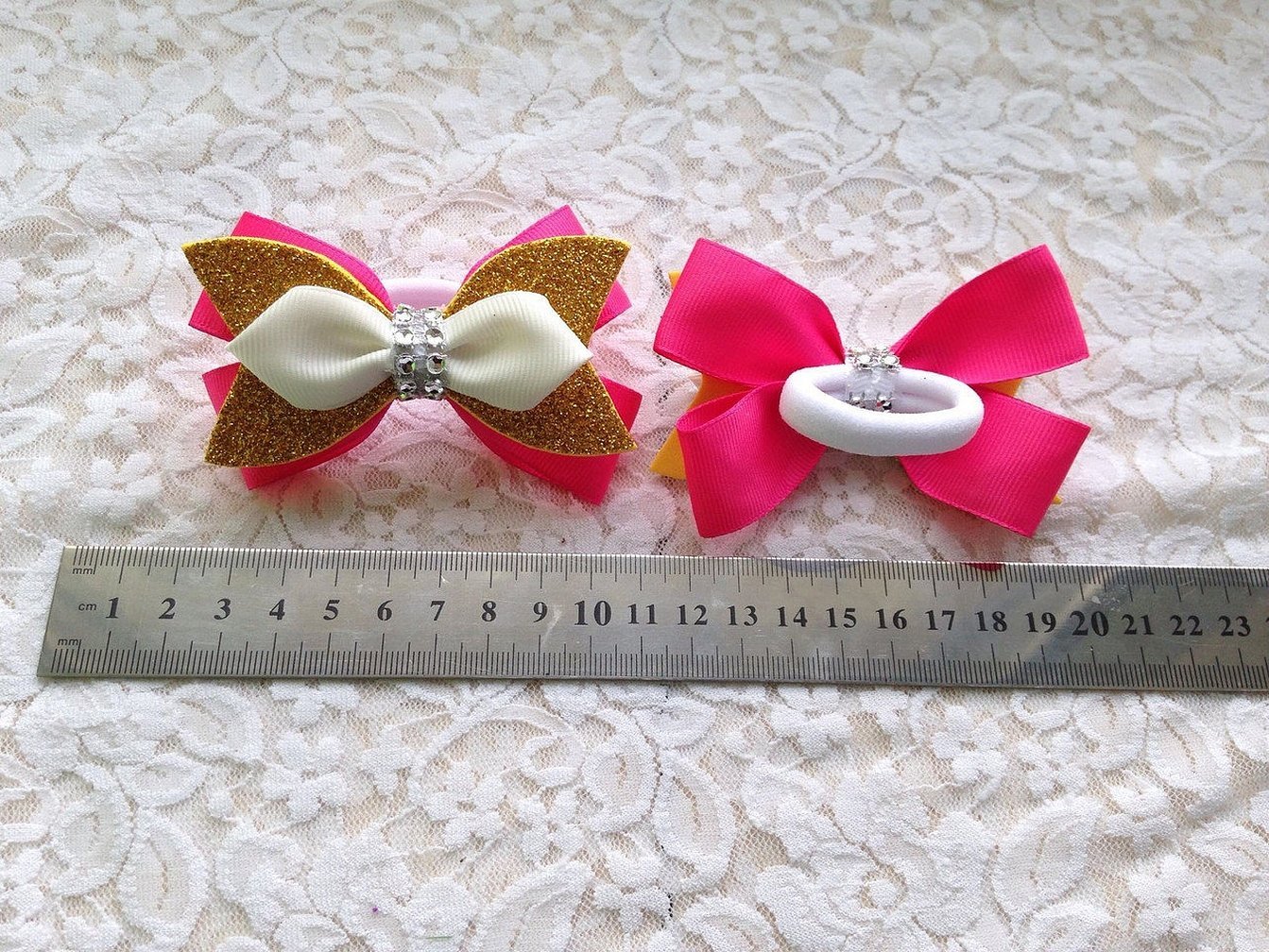
To get more familiar with the process and even with making a braid on a rep, it is recommended to watch the training lessons of Valentina Avanesyan. You can buy various ribbons online at sima-land.ru.
Flowers from rep ribbon
As it has already become clear, kanzashi and other decorations made of rep contain mostly flowers and bows. The most popular flowers are roses and hydrangeas. It is worth considering in more detail how to make them beautifully and qualitatively.
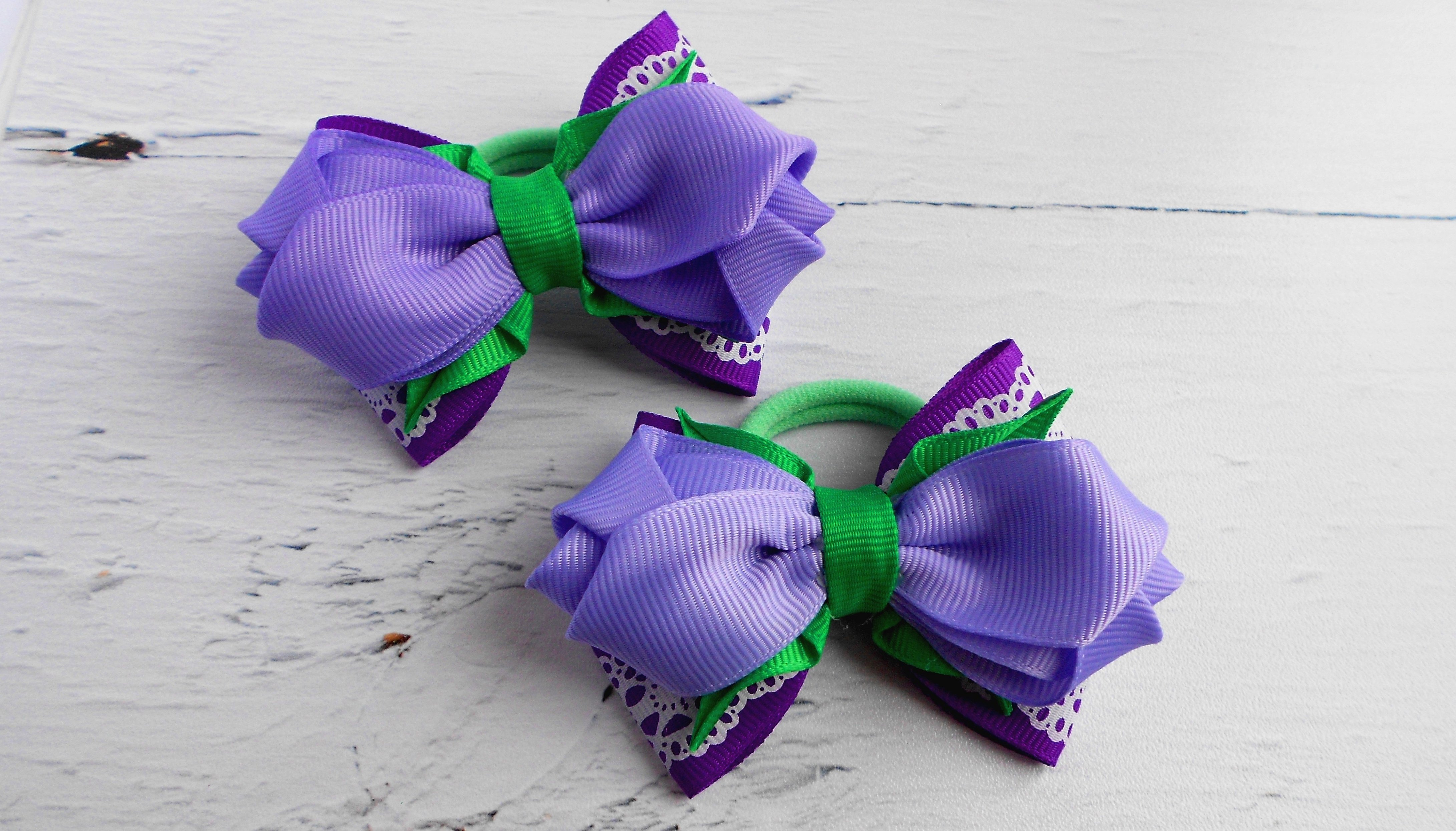
Roses
To make roses, it is advisable to use warm-toned ribbons of red, orange or yellow shades. Sometimes roses are made white or printed, but the variegation of the fabric can fail and have a negative effect on the final decoration. That is why you should use plain materials. To make a rose, you must follow the instructions below:
- Take a piece of fabric of such a length that will be sufficient to create a flower of the desired size;
- Bend one end of the edge to the other so that you get an arrow, and begin to tightly twist the ribbon around the resulting cylinder. The main thing is not to overdo it, since this should not be a dense skein of fabric, but a beautiful and lush flower;
- Twist, pressing the lower part, which will later be glued to the base or fixed to a felt circle. When twisting, do not forget to turn the tape in the other direction every half turn to form rose petals and give volume to the entire flower;
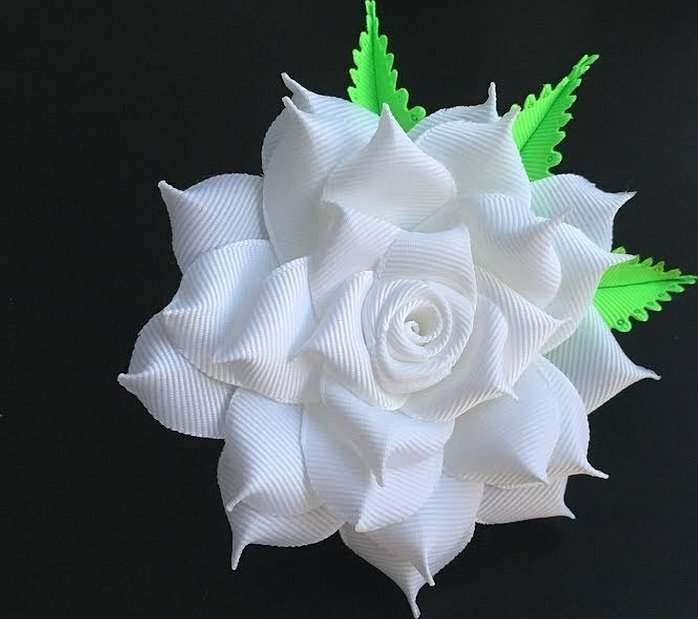
- Straighten and shape as desired after each roll and turning of the fabric;
- After forming a small flower, cut the ribbon, solder the end and glue it to the main part;
- Cut the ribbon into small pieces and connect them at the ends, gluing them in parallel with the folded side up to the base of the flower created earlier;
- Do this until the size of the product is satisfactory;
- Glue the entire flower to the felt or a hair clip.
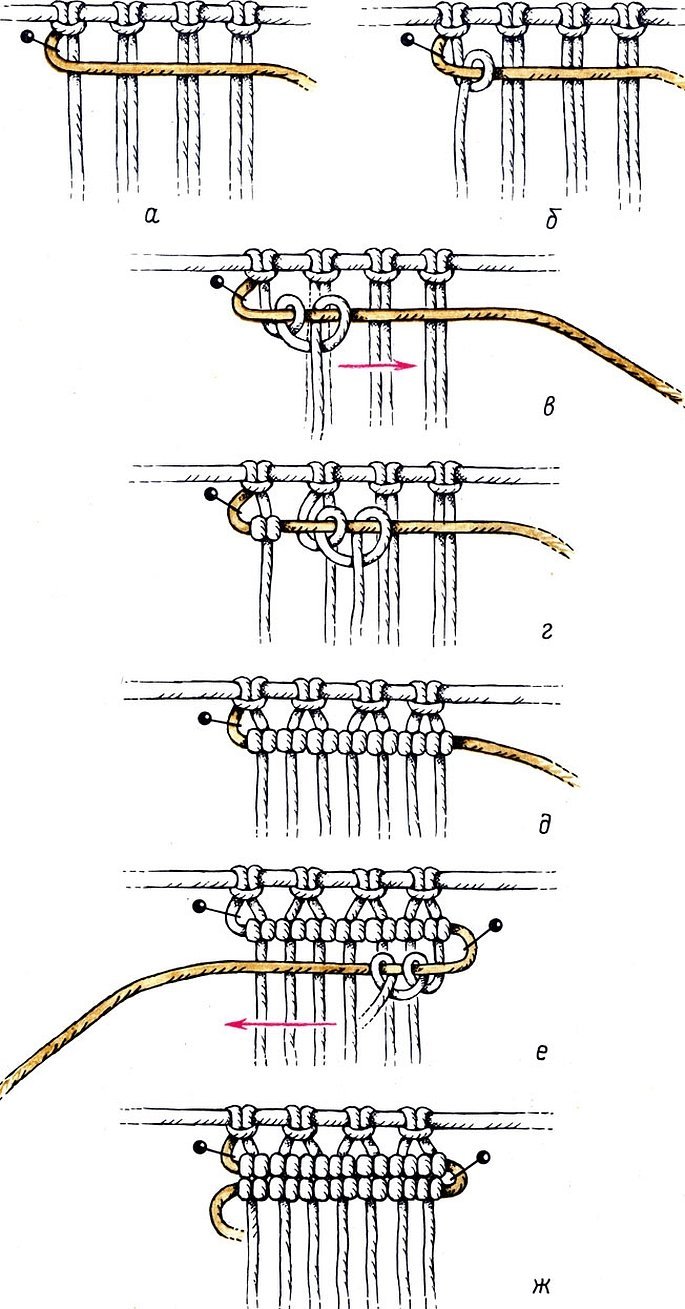
Important! With each subsequent pasting, it is necessary to take into account that the petals should become larger, as should the flower itself, therefore, for each new circle, the length of the tape should increase.
Hydrangeas
Hydrangeas made of rep are made in a similar way, but there are a couple of differences. The entire product consists of small flowers made from squares of tape with cut corners. A rhombus is inscribed in them and stitched with threads, pulling the edges together and forming a flower, into which you can sew beads or an artificial stamen. After the flowers are finished, they are connected together into a lush bouquet and placed on the base.
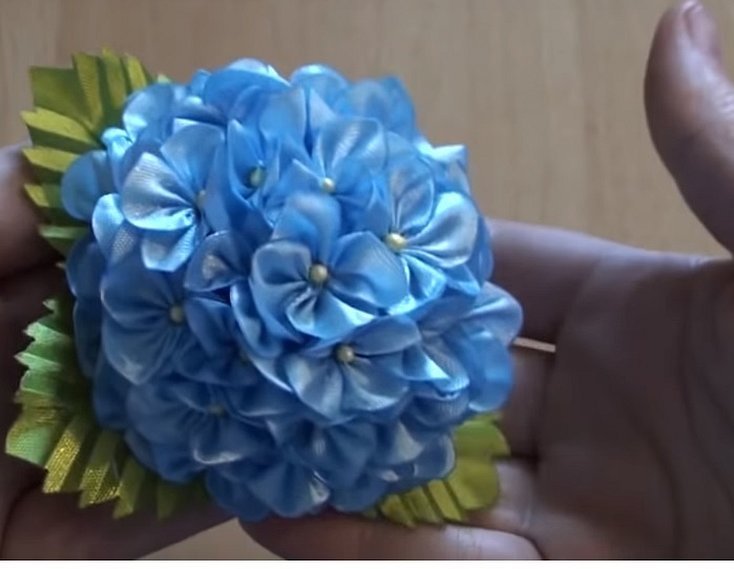
How to print on rep tape
Printing is done on satin, rep, sateen and cotton ribbons. They are produced by specialized printing houses, ribbon factories or companies that apply designs and logos to "blank" ribbons or tags for new products.
The methods used in this process include silk-screen printing and embossing. The former is a type of screen printing, in which paint from the form penetrates onto the printed material. This is how drawings, patterns and inscriptions are filled in. Most often, in silk-screen printing, the form is monofilament polyamide, polyester or metal mesh. Embossing involves squeezing out drawings using presses. It is most often used in post-printing finishing of products.
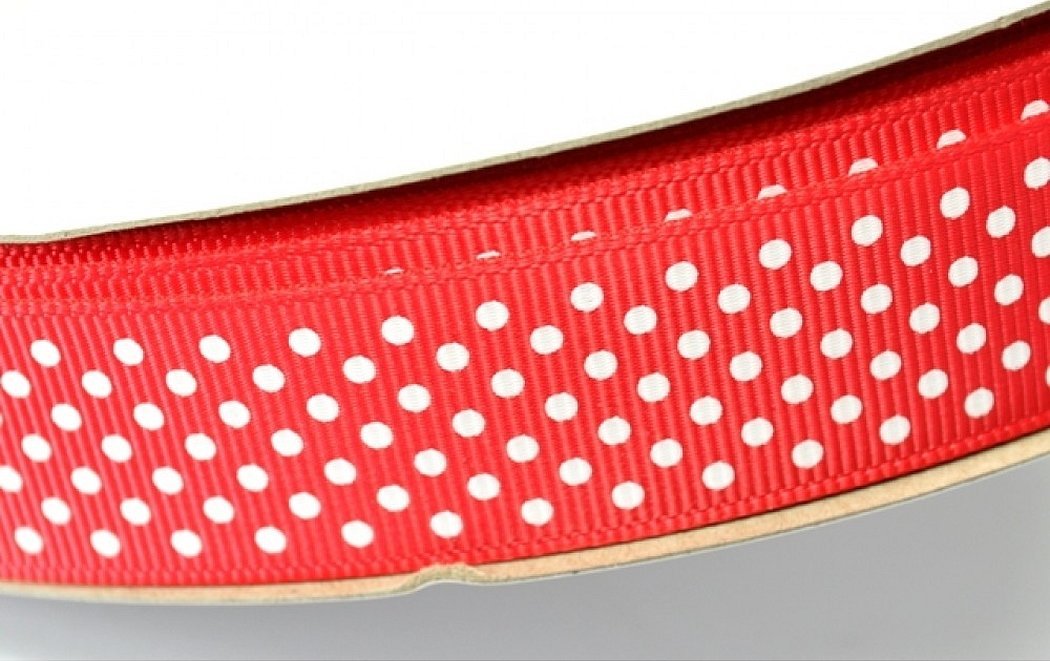
Macrame Rep Knot
The rep knot is often used in macrame, as it is very similar to the loop knot. That is why it is one of the main ones in this technique. A row of such knots looks like a cord, called a bridle, which can be horizontal and diagonal. To weave a horizontal bridle, you need to lay the working fibers parallel to the base, and the main thread along them. The diagonal one is woven at an angle on the rope.

Rep knots can be vertical and horizontal. In vertical weaving, the working thread is the very first thread in the row. In horizontal weaving, it is the base. For the process of learning to weave with such techniques, thick cotton threads should be chosen because they do not slip and allow you to quickly learn how to work with other types.
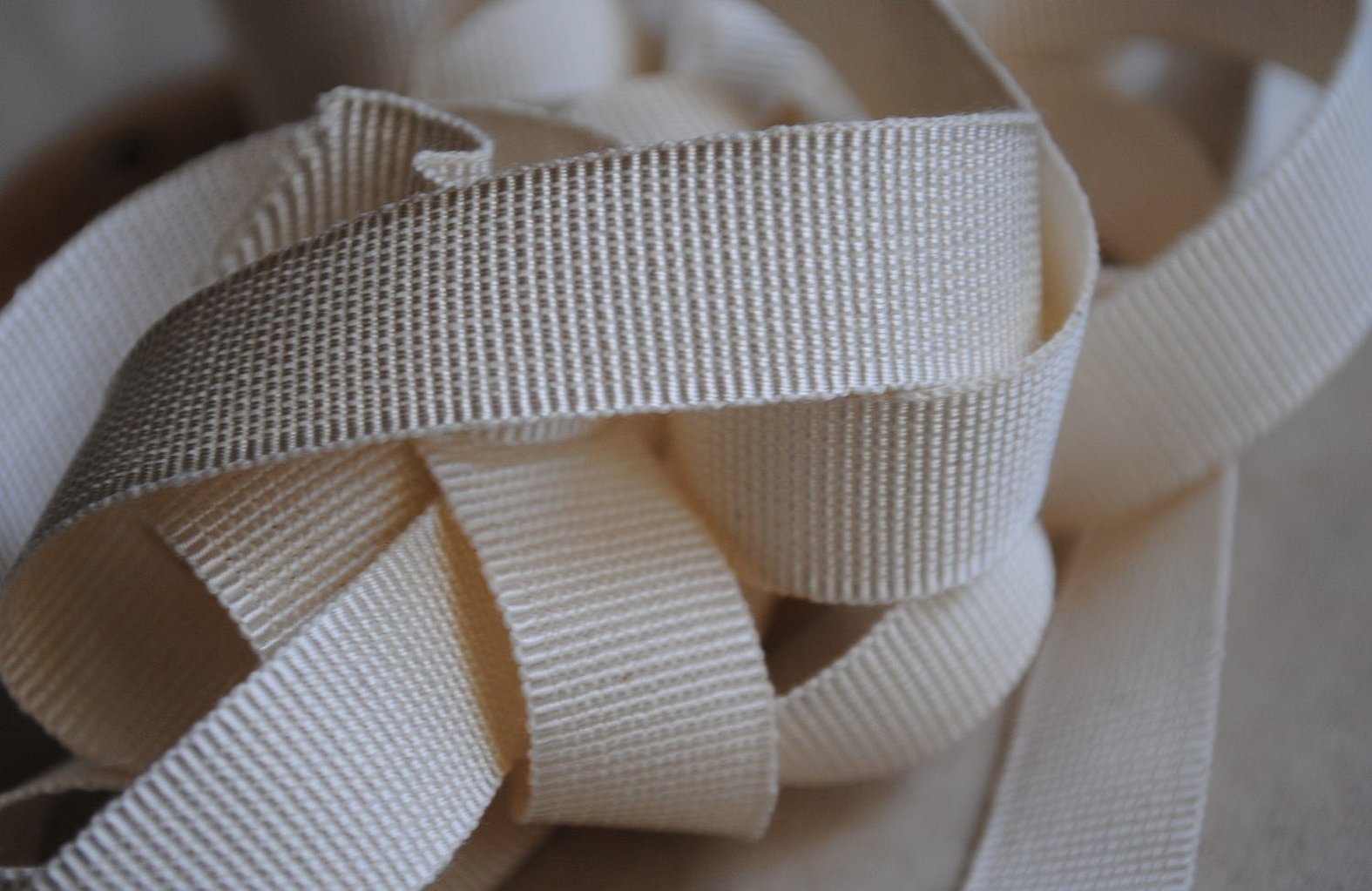
Thus, rep weaving, as well as rep ribbons, is a great way to keep yourself busy and make original and beautiful decorations for yourself and children, dolls. Any, even a beginner needlewoman, can learn this without any problems and become a master.




